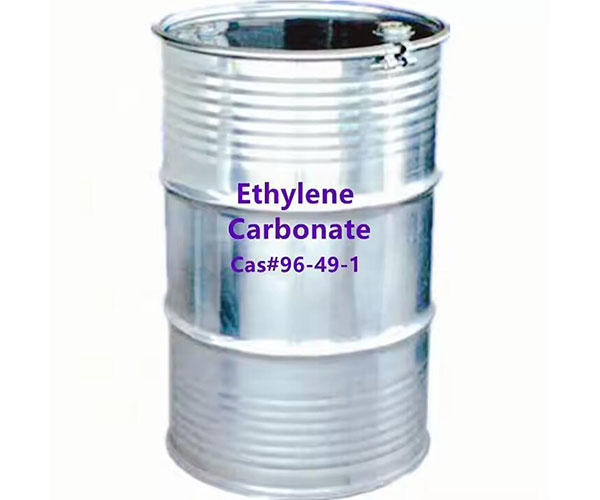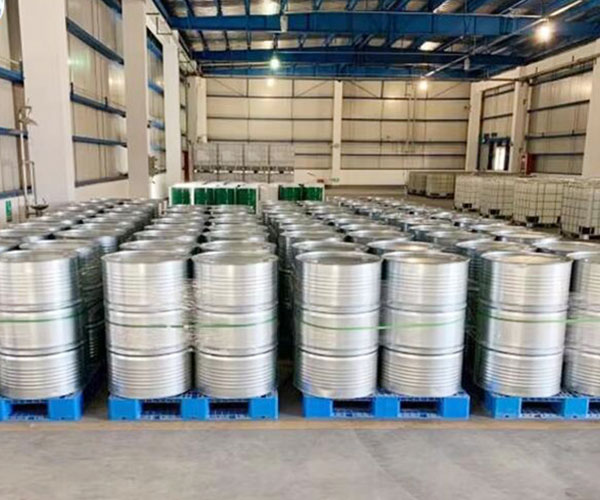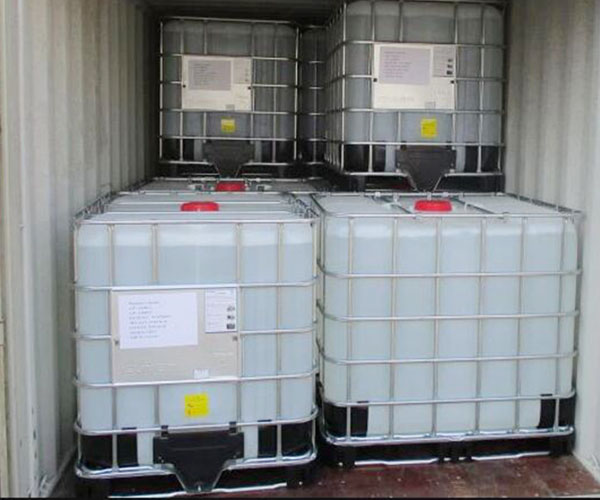Ethylene Carbonate (EC)



Ethylene Carbonate (EC) Solvent
Ethylene Carbonate EC is a commonly used electrolyte component of lithium batteries. It can effectively improve the energy density and cycle life of batteries. EC solvent is said to be an “energy catalyst” for lithium batteries. In addition, its regeneration energy consumption is low, and it has been widely used as a decarbonizer in the natural gas, synthesis gas and hydrogen production industries.
- CAS NO.:96-49-1
- HS Code:2932999099
- EINECS No.: 202-510-0
- Molecular Formula:C3H4O3
- Molecular Weight:88.06
- Appearance:Colourless liquid
Technical Specifications
| Item | Ethylene carbonate |
| Molecular formula | C3H4O3 |
| Assay | >99.9% |
| Moisture | <100ppm |
| Acid | N/A |
| Molecular weight | 88.06 |
| Melting point | 35-38 degree C(lit.) |
| Boiling point | 1.321 g/mL at 25 degrees C(lit.) |
| Density | 1.321 g/mL at 25 degree C(lit.) |
| Flash point | 320 degree F |
| Form | Crystalline low melting solid |
| Color | Colorless |
Main Applications of Ethylene Carbonate EC
-
Lithium battery electrolyte
Ethylene carbonate is an important component of lithium battery and lithium-ion battery electrolyte. Ethylene carbonate solvent has the characteristics of high dielectric constant and dissolving electrolyte, which can improve battery performance. In order to reduce the viscosity and melting point of the electrolyte, it is usually mixed with other solvents (such as dimethyl carbonate, ethyl methyl carbonate, etc).
-
Organic synthesis intermediates
Ethylene carbonate EC can be used as an organic synthesis intermediate to replace ethylene oxide for dioxygenation reactions. It is also the main raw material for the production of dimethyl carbonate by the transesterification method. In addition, it is also used to synthesize pharmaceutical raw materials such as furazolidone.
-
Solvents and plasticizers
As an organic solvent with excellent performance, ethylene carbonate can dissolve a variety of polymers, such as polyacrylonitrile and polyvinyl chloride. It can also be used as a plasticizer to improve the flexibility and processing properties of materials.
-
Textile and printing and dyeing
In the textile industry, ethylene carbonate is used as a fiber finishing agent and swelling agent to improve the properties of fibers and the feel of fabrics, while enhancing the printing and dyeing properties of hydrophobic synthetic fibers.
-
Other industrial applications
Ethylene carbonate is also used in water glass slurry, concrete additives, solvents for removing acidic gases, and the production of lubricating oils and greases.
Excellent Properties of Ethylene Carbonate Solvent
High boiling point and low toxicity. EC Ethylene carbonate has a high boiling point (248℃), which makes it stable in high temperature environments, and its low toxicity makes it safer in application.
High polarity and high permittivity. Ethylene carbonate has high polarity (molecular dipole moment is 4.9D) and high permittivity, which makes it able to be used as a polar solvent and electrolyte.
High solubility for polymers. EC solvent can dissolve a variety of polymers, such as polyacrylonitrile and polyvinyl chloride, etc.
Environmentally friendly. The synthesized polycarbonate has the characteristics of biodegradability, which makes ethylene carbonate also have significant advantages in environmental protection.
Synthesis method of EC Solvent
Phosgene method
The phosgene method is the earliest industrial method for preparing ethylene carbonate. This process uses ethylene glycol to react directly with phosgene. Because phosgene is highly toxic and causes serious pollution to the environment, this method has been banned in developed countries.
Transesterification method
The method of preparing ethylene carbonate EC by the transesterification reaction of diethyl carbonate and ethylene glycol is the transesterification method. Dibutyltin dilaurate and a trace amount of strong base are used as catalysts for the transesterification reaction, and ethanol is continuously distilled out at the reaction temperature of the xylene reflux control system. To reduce the loss of diethyl carbonate in the process of evaporating ethanol, increase the reaction temperature of the system and accelerate the reaction speed. Then directly add p-toluenesulfonic acid to neutralize and catalyze the prepolymerization reaction. The generated oligomers are catalyzed by high-efficiency cracking catalyst tin powder and depolymerized at high temperature to obtain cyclic carbonate.
Ethylene oxide and carbon dioxide addition method
The preparation of ethylene carbonate by the addition reaction of ethylene oxide and carbon dioxide is an exothermic and volume-reducing reaction. From the perspective of chemical equilibrium, low temperature and high pressure conditions are conducive to the reaction. At the same time, the selection of a suitable catalyst is the key to whether the reaction can proceed smoothly. The systems of this reaction mainly include homogeneous catalytic systems and heterogeneous catalytic systems.
Contact Us
Have any need about new-energy materials? Feel free to contact us at any time.
- Phone: +86-371-55091002
- Whatsapp: +8618624832876
- Wechat: +8618624832876
- Email: Sales@mgm-batterymaterials.com
- Address: NO.283 XISANHUAN ROAD,HIGH-TECH INDUSTRIALDEVELOPMENT ZONE,ZHENGZHOU,HENAN,CHINA.
